Direct speech and indirect speech – KS2 examples and worksheets
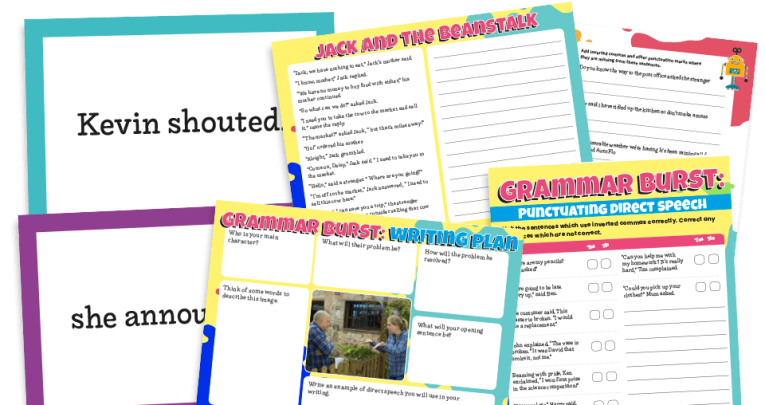
Help children know when and how to use speech marks in direct speech, and why not to use them in indirect speech, with these lessons, activities, worksheets and more for Key Stage 2 grammar…

- by Teachwire
- Classroom expertise and free resources for teachers
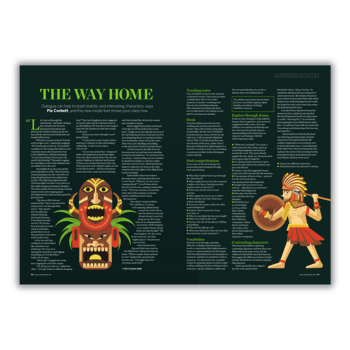
Learn all about direct speech and indirect speech in Year 3 and Year 4 with these videos, lesson ideas, worksheets and more…
What is direct speech?
Direct speech in writing is where you write down a direct quotation of someone’s actual words. You mark them with inverted commas. For example:
“I’ll meet you at the library tomorrow morning,” Sharon said.
National curriculum links
Year 3: Introduction to inverted commas to punctuate direct speech
Year 4: Use of inverted commas and other punctuation to indicate direct speech
What are inverted commas?
Inverted commas (also known as speech marks or quotation/quote marks) go before and after direct speech, surrounding what was said. For a nice little introduction or recap, watch this video taking you through their uses.
It’s clearly explained with large captions across the bottom so that children can see examples written out with the correct punctuation.
What is indirect speech?
Indirect speech (or reported speech), on the other hand, is where you are given a rough approximation of what someone said, not their exact words. This doesn’t require quotation/speech marks. For example:
Sharon told them she’d see them in the library tomorrow.
Direct speech examples
- “I’m tired,” she yawned.
- “What’s that sound?” he asked. “It’s coming from under the floorboards!” Elle replied.
- The police officer shouted, “There they are!”
Indirect speech examples
- Mrs Weismann asked you to go see her in her office.
- My dad told me to clear up my room.
- Jerry said he found the book out in the playground.
Direct speech KS2 resources
Knock, knock jokes worksheet
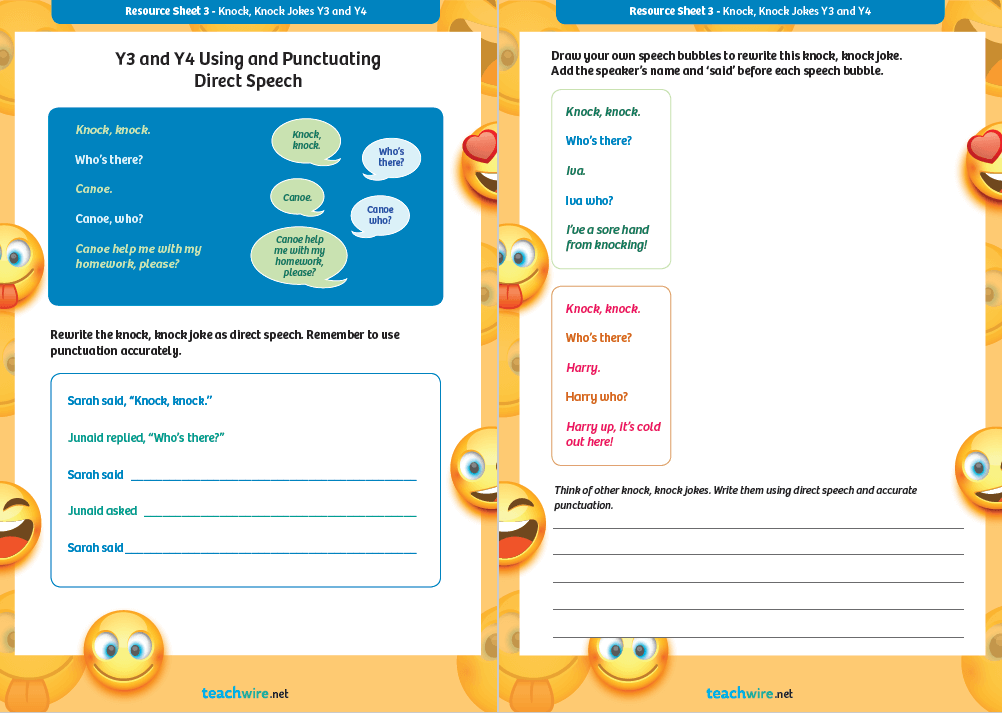
This free resource sheet from Rachel Clarke uses a small-steps approach to slowly scaffold children through the rules and conventions of dialogue.
In the first instance pupils are simply asked to rewrite knock, knock jokes in speech bubbles. Once they’ve got the hang of this, they should then be encouraged to write the name of the speaker and ‘said’ before each speech bubble.
The second level asks pupils write each line of the knock, knock joke using inverted commas.
Punctuating direct speech resource pack

This Y4 grammar resource from literacy resources website Plazoom provides everything you need to teach a series of five lessons on punctuating direct speech, culminating in an extended writing task where children can use their grammatical understanding in context.
Inverted commas poster
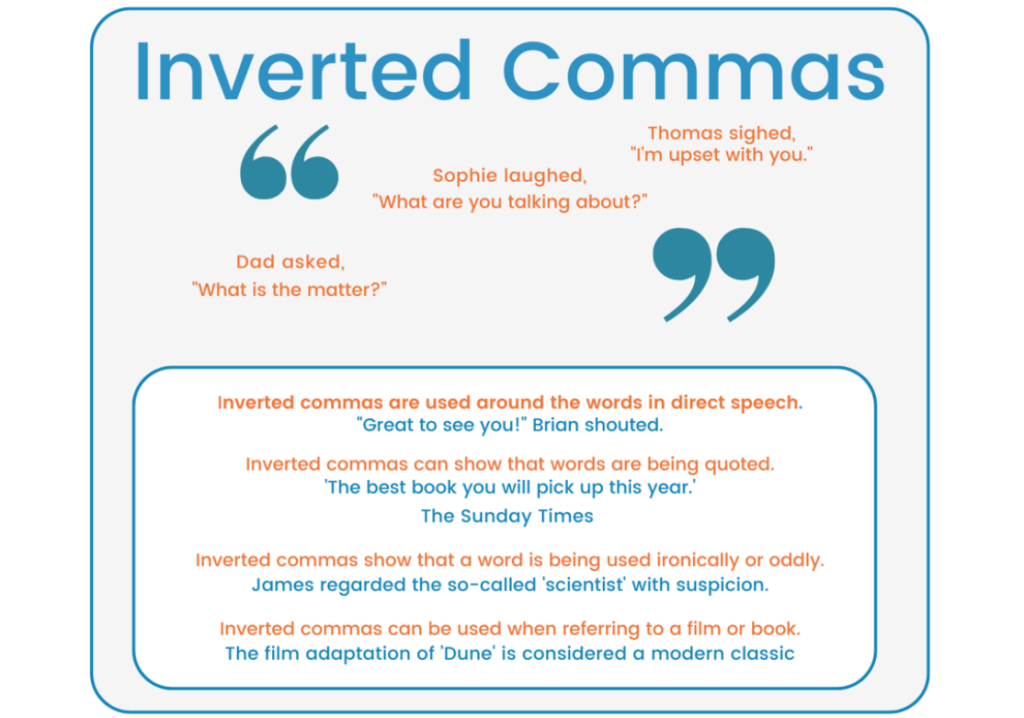
This free inverted commas poster is a valuable teaching aid that visually demonstrates how to use inverted commas correctly when punctuating direct speech.
Pie Corbett WAGOLL

Use this Pie Corbett dialogue KS2 resource to help your class discover how writing believable speech can help build character. The download contains a free original mystery model text and activities.
BFG newspaper report lesson
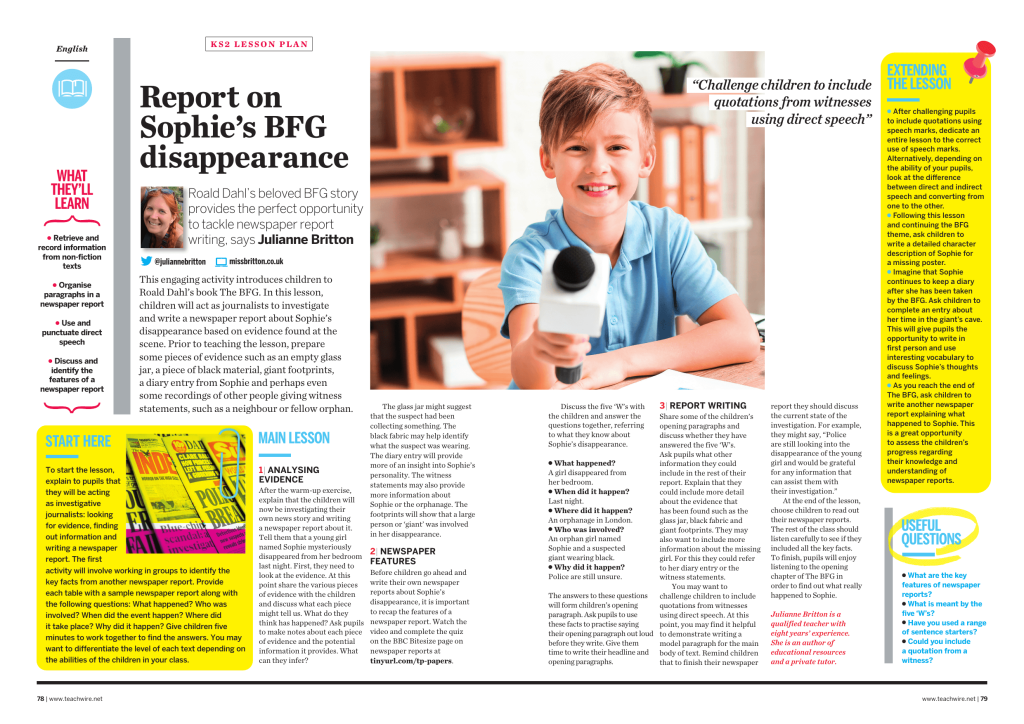
Roald Dahl’s beloved BFG story provides the perfect opportunity to tackle newspaper report writing. Challenge children to include quotations from witnesses in their report by using direct speech.
How To Train Your Dragon lesson
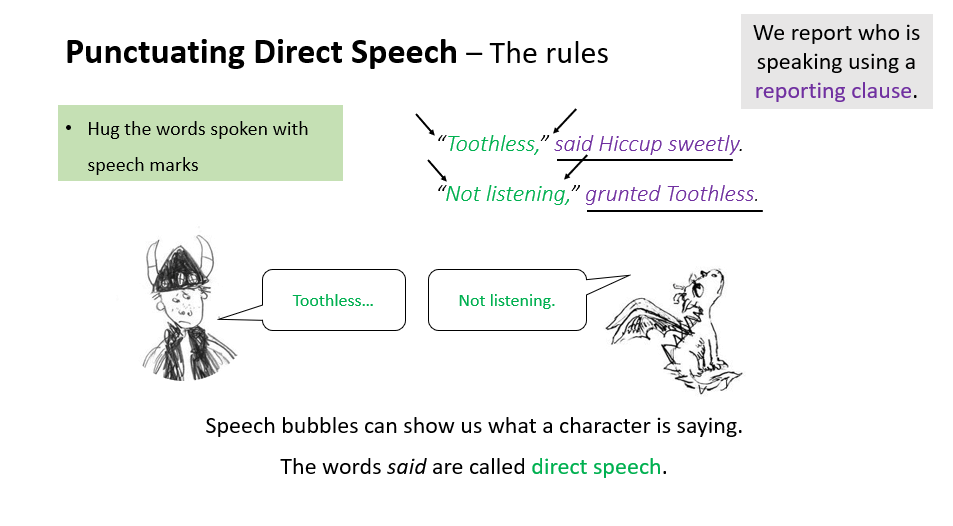
Challenge pupils to write an exchange between Hiccup and his dragon Toothless as punctuated dialogue in this Year 4 English unit based on How To Train Your Dragon by Cressida Cowell.
Speech marks washing line
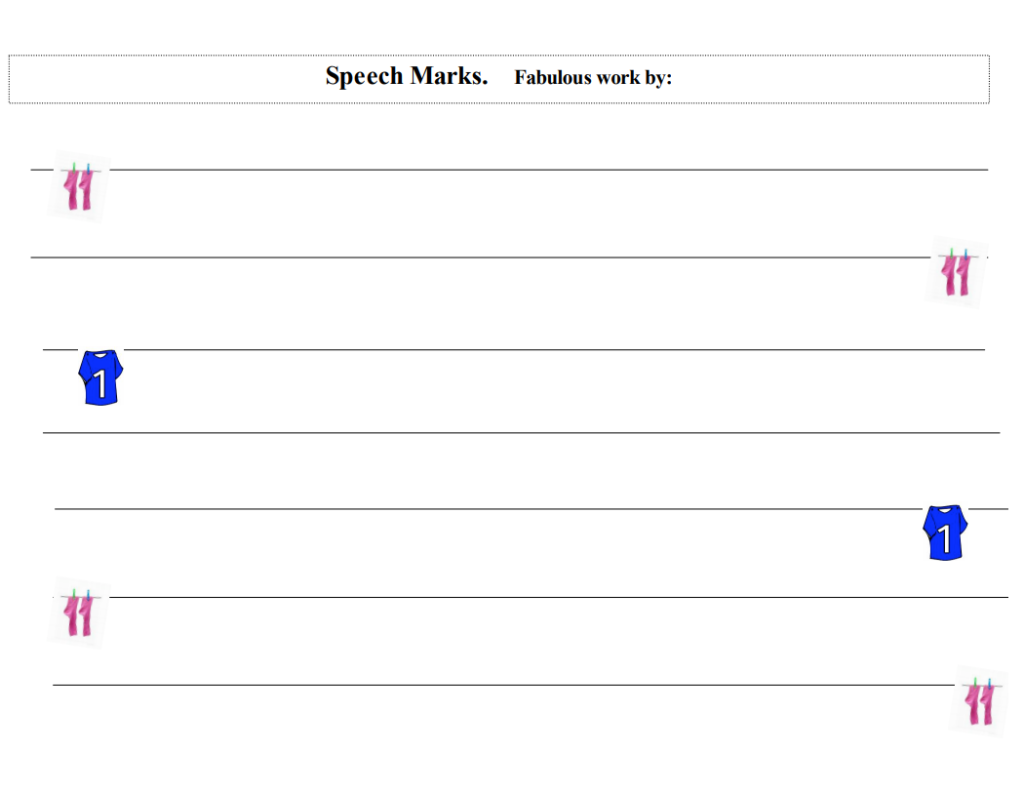
This handy idea and accompanying worksheet explains that reported speech “hangs on a line” and pegs (speech marks) keep it in place.
Speech mark rules
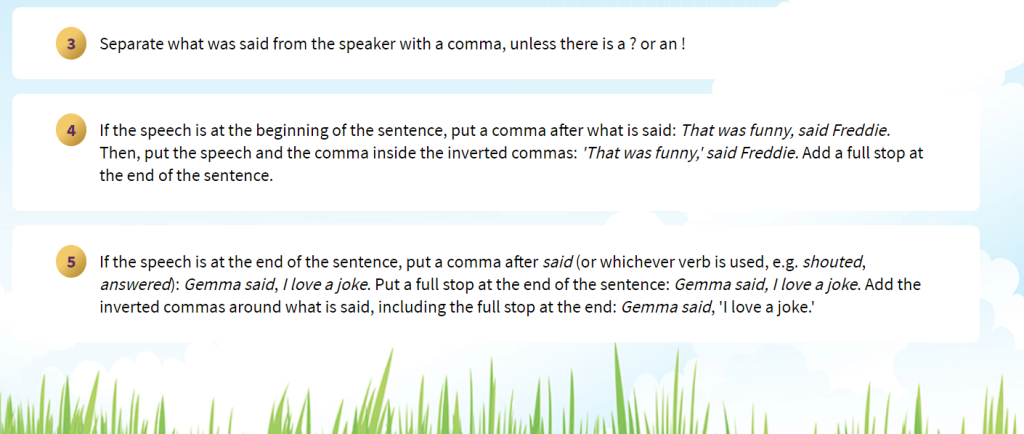
There are many “rules” of speech marks, but no definitive list. You don’t want to overwhelm children with too many while they’re just learning so this Rising Stars list of five rules is a nice size for children to read and take in.
Quotation marks worksheet
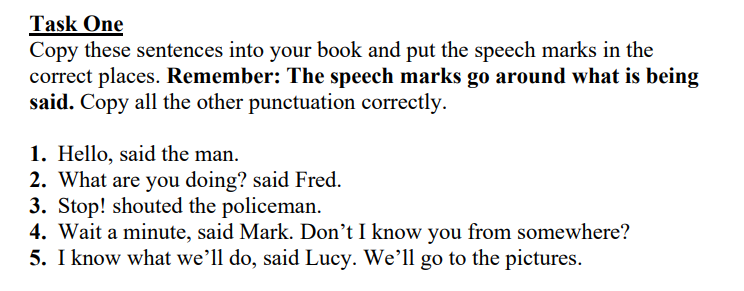
This free two-page worksheet has six tasks and an extension all revolving around punctuating speech.
It starts with putting speech marks into sentences, then putting speech marks and all other punctuation, before building up to punctuating longer passages.
Inverted commas worksheet set
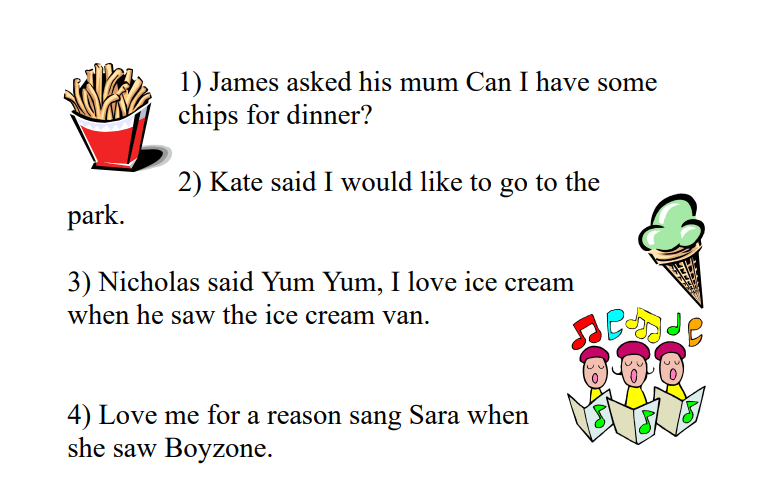
This free resource set has three parts. One is ‘Witch and Tiger Conversation’, which shows ten pictures with blank speech bubbles. Children choose names for the witch and the tiger, then create the contents of the conversation.
Next they re-write this conversation in the form of a story by adding phrases such as ‘said Tom’ and ‘asked Joe’ as well as speech marks and other punctuation.
The second and third parts are ‘Missing Speech Marks’ worksheets, where children need to add speech marks to sentences.
Browse more SPaG games.










